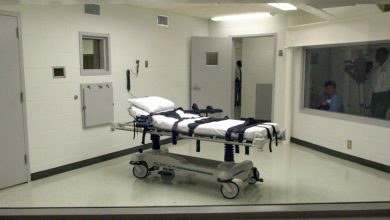The Key Insights From Our First Poll of the 2022 Midterms

Which side has the most energy heading into November? More polls will come as the midterm elections near, but for now we’ve wrapped up our first New York Times/Siena survey, and here are some notable takeaways:
Voters are not happy. Just 13 percent of registered voters said America was heading in the right direction. Only 10 percent said the economy was excellent or good. And a majority of voters said the nation was too politically divided to solve its challenges. As a point of comparison, each of these figures shows a more pessimistic electorate than in October 2020, when the pandemic was still raging and Donald J. Trump was president.
Joe Biden is in trouble. His approval rating in our poll was in the low 30s. That’s lower than we ever found for Mr. Trump.
Democrats would rather see someone else get the party’s nomination in 2024. Mr. Biden’s age was as much of an issue among voters as his overall job performance. Of course, he probably would have trailed “someone else” ahead of the last presidential primary as well, but he still won the nomination because his opposition was weak or fractured. Still, it’s a sign that Mr. Biden is much weaker than the typical president seeking re-election. It could augur a contested primary.
Trump isn’t doing great, either. Like Mr. Biden, Mr. Trump has become less popular over the last two years. The number of Republicans who hold an unfavorable view of him has doubled since our final polling in 2020. He’s now under 50 percent in a hypothetical 2024 Republican primary matchup.
Gov. Ron DeSantis of Florida is already at 25 percent in an early test of the Republican primary. Mr. Trump may still be the front-runner, but the polls increasingly look more like the early surveys from the Democratic primary in 2008 — when Hillary Clinton found herself in an extremely close race and ultimately lost to Barack Obama — than the polls ahead of the Democratic primary in 2016, when she won a protracted battle against Bernie Sanders.
Many voters do not want to see a 2020 rematch. Mr. Biden still led Mr. Trump in a hypothetical 2024 matchup, 44 percent to 41 percent. What was surprising: Ten percent of respondents volunteered that they would not vote at all or would vote for someone else if those were the two candidates, even though the interviewer didn’t offer those choices as an option.
The midterm race starts out close, with voters nearly evenly divided on the generic congressional ballot (voters are asked whether they prefer Democrats or Republicans to be in control of Congress). That’s a little surprising, given expectations of a Republican landslide this year.
The news is helping Democrats. The news has been bad for Democrats, from recent court rulings to their frustrations in trying to stop mass shootings, but for the moment it may be helping the Democratic Party. Around 30 percent of voters combined said topics related to guns, abortion and democracy were the most important problem facing the country, and Democrats had a wide lead among these voters. It’s a big change from earlier in the cycle, when immigration, crime and questions about school curriculums seemed likely to dominate the campaign — and help Republicans.
Support for abortion rights is up in the wake of the Supreme Court’s decision to overturn Roe v. Wade. Sixty-five percent said they thought abortion should be completely or mostly legal, up from 60 percent in the last Times/Siena poll that asked about the issue, in September 2020.
Class polarization continues. In recent years, Democrats have made gains among well-educated voters while Republicans have made gains among voters without a college degree. That trend is not stopping, the poll shows. Inflation and the economy are dragging Democrats down among working-class voters — perhaps notably among Hispanic Americans — while issues like guns, abortion rights and threats to democracy are motivating the party’s white college-educated voters.
There are signs of a shifting racial coalition. For the first time in a Times/Siena national poll, Democrats’ share of support from white college graduates was higher than for nonwhite voters — a remarkable sign of the shift in political energy in the Democratic coalition. As recently as the 2016 congressional elections, Democrats won more than 70 percent of nonwhite voters while losing among white college graduates.
Voters of both parties are increasingly skeptical about the country’s institutions and its future. A majority of voters say the American system of government does not work, and that major reforms are needed or even a complete overhaul. Most voters say the political system can no longer address the nation’s problems, with the young being particularly pessimistic. And voters of both parties vary widely in their interpretations of events like the Jan. 6 storming of the Capitol.
For more detail, here is the full list of Times articles derived from the poll:
Most Democrats Don’t Want Biden in 2024, New Poll Shows (July 11)
Half of G.O.P. Voters Ready to Leave Trump Behind, Poll Finds (July 12)
As Faith Flags in U.S. Government, Many Voters Want to Upend the System (July 13)
Poll Shows Tight Race for Control of Congress as Class Divide Widens (July 13)
Could the Midterms Be Tighter Than Expected? (“The Daily,” July 13)
Young Voters Are Fed Up With Their (Much) Older Leaders (July 14)
Voters See a Bad Economy, Even if They’re Doing OK (July 15)





